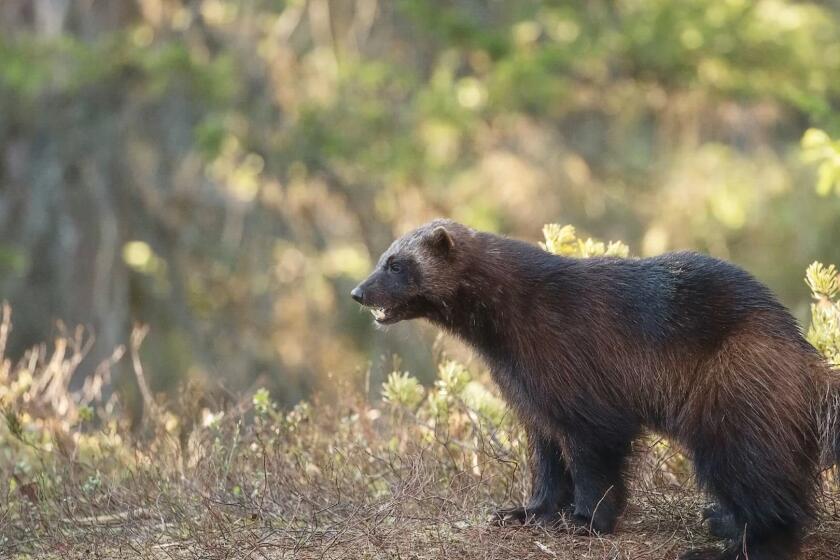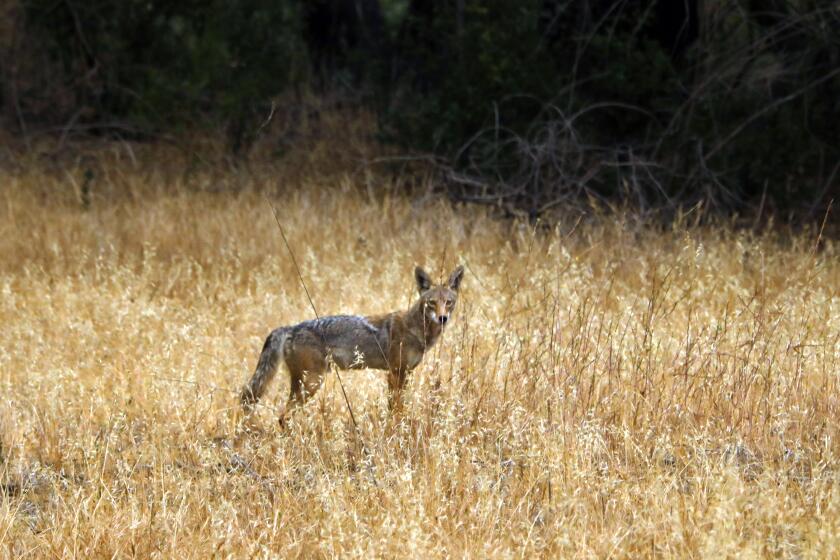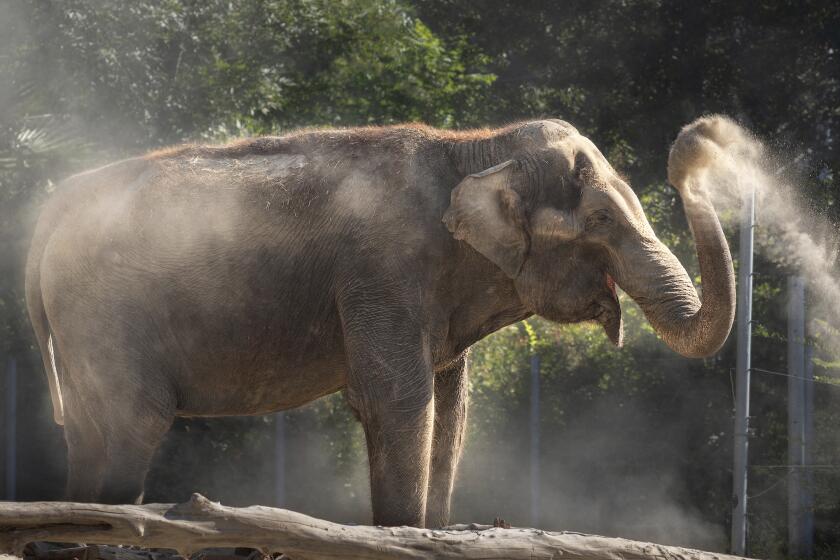The Dirt on Dino Teaching Tools : Junior paleontologists say finding real dinosaur bones is just the thing to make their day.
Fourteen-year-old Rachel Ross has been up to her neck in dirt for hours at a stretch, eating and showering in a nearby high school cafeteria. And she couldn’t be happier. After all, she’s planned this vacation since she was 9.
“I love it,” she said. “It’s a real adrenaline rush when you find a bone.” Rachel, who traveled from Alaska to be here, is the youngest on the team of volunteers from the nonprofit organization EarthWatch who have each paid $1,295 for an opportunity to uncover bones of giant mammoths. The animals perished in the area 26,000 years ago after becoming trapped in a water-filled sinkhole. Scientists believe as many as 100 mammoths are buried here. So far, bones from 47 have been uncovered, according to Larry Agenbroad, the Northern Arizona University professor who is site director for the nonprofit project. Only 30% of the site has been excavated, he explained.
One day recently, my family and I stared down at the huge bones, most left exactly where they’d been found in the excavated sinkhole. We, along with other visitors, were able to walk around the perimeter of the dig and it is an amazing sight. “I can’t believe those bones are so big,” my daughter Reggie whispered as we looked down at the huge tusks. First discovered in 1974 when a local developer was preparing the land to build houses, the sinkhole is now covered by a 20,000-square-foot building that enables the fossils to be left exposed in their natural habitat. It is a permanent display open year-round--even while excavation continues each summer.
Just outside, kids were searching for “fossils” in a giant sandbox. The success of that exhibit prompted the mammoth site team to launch a junior paleontological program this summer for youngsters 10-16. The children spend an evening working in an area adjacent to the bone bed, searching for fiberglass replicas molded from mammoth bones, learning paleontological technique in the process. Agenbroad’s team also has developed a school curriculum now being used locally. (For information about the mammoth site and the junior paleontological program call 605-745-6017. To find out more about EarthWatch programs here and at other digs, call 800- 776-0188.)
This summer, while your older kids are lining up to see “Jurassic Park” for the fourth time and your preschoolers are glued to the television set watching Barney the singing dinosaur, you may want to use your vacation to teach them something about real dinosaurs and the science of paleontology. Take them to a zoo and then to a natural history museum to look at skeletons, suggested Agenbroad. Check out some books on the subject from the library.
“You can go see the movie but remember, there’s nothing like the real thing,” said Smithsonian Institution paleontologist Scott Wing, who decided the film was too scary for his 5- and 9-year-old kids. The Yale-trained scientist said he first got interested in dinosaurs by playing with plastic models in a sandbox. “At least 20 museums across the country have some dinosaur exhibit this summer,” he noted.
For example, if you’re visiting Philadelphia, head for the Academy of Natural Sciences exhibit “Jurassic Park: The Science Behind the Story.” There children can view a robotic display of Deinonychuses eating a Tenontosaurus (215-299-1000). Ask your kids to imagine what color dinosaurs were or how they sounded, suggests Academy paleontologist Ted Daeschler. Even scientists don’t really know.
New York City’s American Museum of Natural History (212-769-5100) also has a “Dinosaurs of Jurassic Park” exhibit, including re-creations of the film’s sets alongside fossil dinosaurs from the museum to show how the filmmakers used science--and their imaginations--to create the movie.
In Chicago, at the Field Museum of Natural History (312-922-9410), view the reconstructed skeleton of the Brachiosaurus. Standing more than four stories high, it is the largest mounted dinosaur in the world.
The newly opened George S. Eccles Dinosaur Park in Ogden, Utah, features 26 nearly full-size replicas of prehistoric crawlers, dinosaurs and flying reptiles (801-393-DINO).
More than 2,000 fossilized bones can be viewed at Dinosaur National Monument, 20 miles east of Vernal, Utah. Check with the park rangers the day you visit about changing programs being offered for children and families. (For information call Dinosaurland, a local travel organization that specializes in distributing information about the “Dinosaur Triangle”--an area on the Colorado/Utah border that is known for its dinosaur discoveries--800-477-5558.)
Later this summer, the Museum of Western Colorado in Grand Junction is expected to add a kid’s quarry to its hands-on exhibits. Near the main museum, kids will be able to dig through plaster and sand that simulates quarry conditions to uncover replicas of dinosaur bones. Children can also peek in on an active paleontology lab. About 30 miles away, families can follow a 1 1/2-mile walking trail among fossils left in their natural state.
Las Vegas attorney Mark Tratos took his two dino-loving sons to a dig sponsored by the Dinosaur Discovery Expedition in Colorado. (Call 800-344-3466 for information on 1994 digs. This season’s are full.) While Tratos worked beside a paleontologist at the Mygatt-Moore Quarry just outside Grand Junction, Colo., his 6- and 8-year-olds were busy at Dino Camp nearby, making plaster casts of the bones, searching for fossil eggs, solving the mystery of the death of a young dinosaur, learning what paleontologists do. “Here you had the opportunity to get excited about the same things as your kids--to share their enthusiasm,” said Tratos, noting that the group uncovered lots of bones. “It was an ideal vacation.”
Ten-year-old Nathan Harris, meanwhile, is thinking about more than his next vacation. The Bozeman, Mont., fifth grader is planning his future . . . as a paleontologist. He just got back from the Museum of the Rockies’ Paleontology Field School near Glacier National Park in Montana. (Call 406-994-2251 for information about the museum’s dinosaur exhibits and next year’s programs--this year’s are full.)
He camped in a tepee and dug alongside his parents and paleontologists on Egg Mountain, where the famed dinosaur nesting colonies were first discovered in the late 1970s.
Nathan gave the trip his highest rating: “We got to dig a lot and hike a lot and the food was good, too.”
Taking the Kids invites reader questions and comments about family travel. Address them to: Taking the Kids, 2859 Central St., Box 119, Evanston, Ill. 60201.



